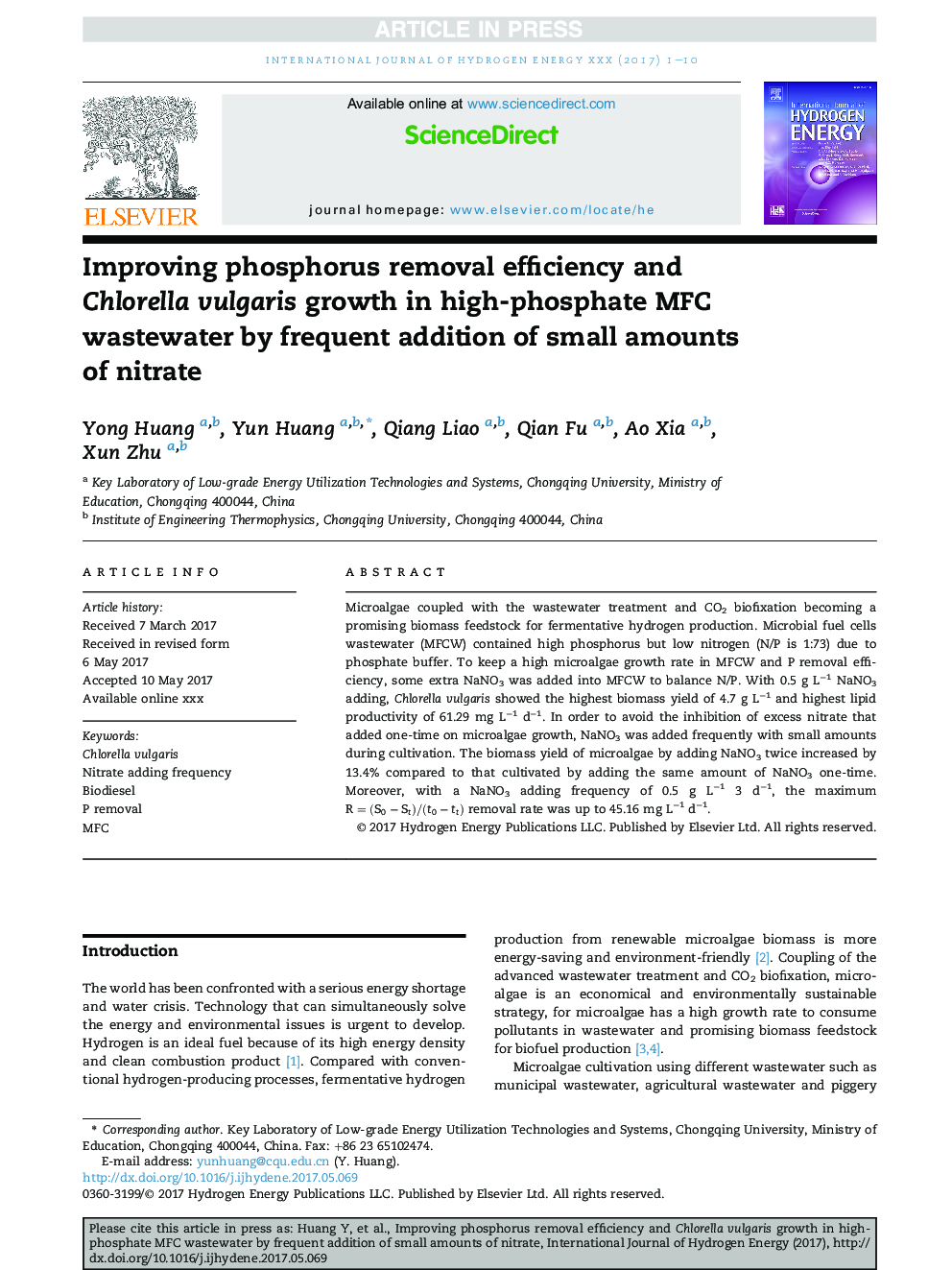| Article ID | Journal | Published Year | Pages | File Type |
|---|---|---|---|---|
| 7709687 | International Journal of Hydrogen Energy | 2017 | 10 Pages |
Abstract
Microalgae coupled with the wastewater treatment and CO2 biofixation becoming a promising biomass feedstock for fermentative hydrogen production. Microbial fuel cells wastewater (MFCW) contained high phosphorus but low nitrogen (N/P is 1:73) due to phosphate buffer. To keep a high microalgae growth rate in MFCW and P removal efficiency, some extra NaNO3 was added into MFCW to balance N/P. With 0.5 g Lâ1 NaNO3 adding, Chlorella vulgaris showed the highest biomass yield of 4.7 g Lâ1 and highest lipid productivity of 61.29 mg Lâ1 dâ1. In order to avoid the inhibition of excess nitrate that added one-time on microalgae growth, NaNO3 was added frequently with small amounts during cultivation. The biomass yield of microalgae by adding NaNO3 twice increased by 13.4% compared to that cultivated by adding the same amount of NaNO3 one-time. Moreover, with a NaNO3 adding frequency of 0.5 g Lâ1 3 dâ1, the maximum R=(S0âSt)/(t0âtt) removal rate was up to 45.16 mg Lâ1 dâ1.
Related Topics
Physical Sciences and Engineering
Chemistry
Electrochemistry
Authors
Yong Huang, Yun Huang, Qiang Liao, Qian Fu, Ao Xia, Xun Zhu,
